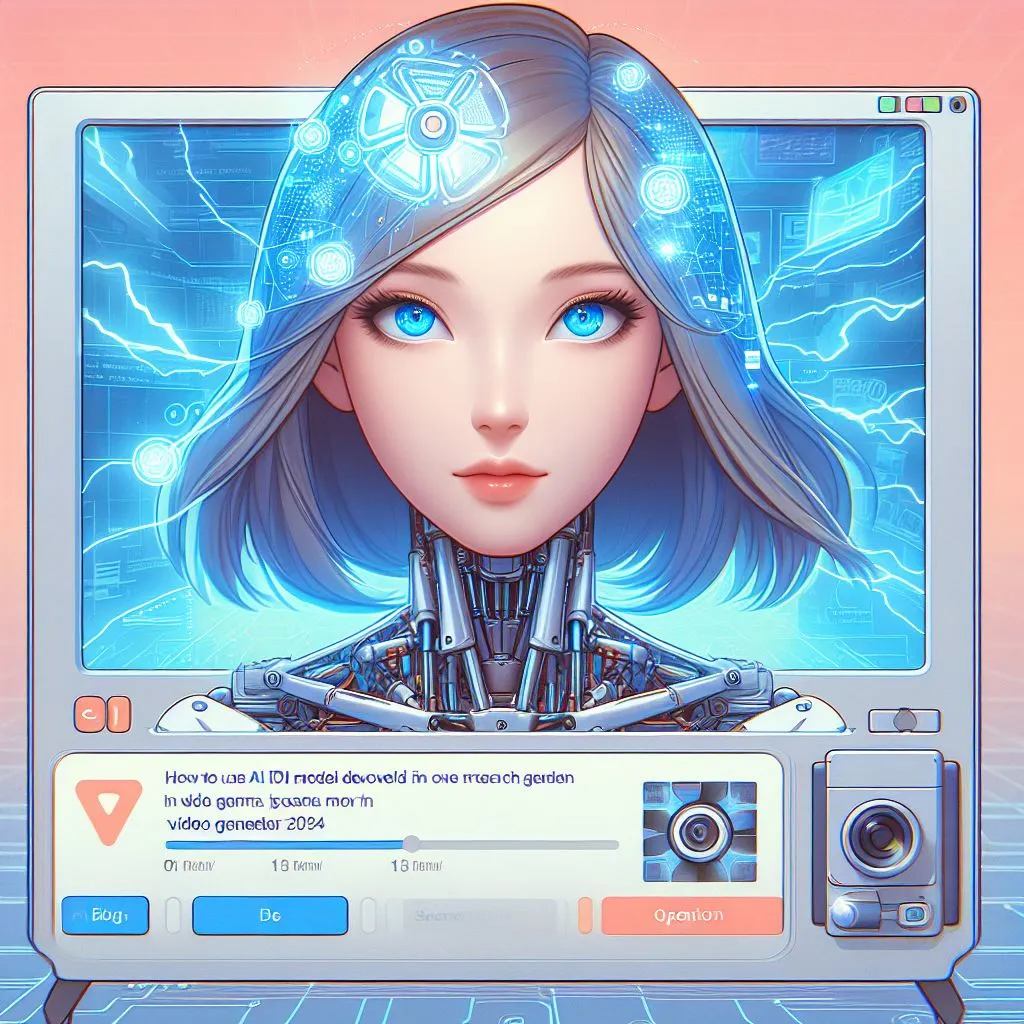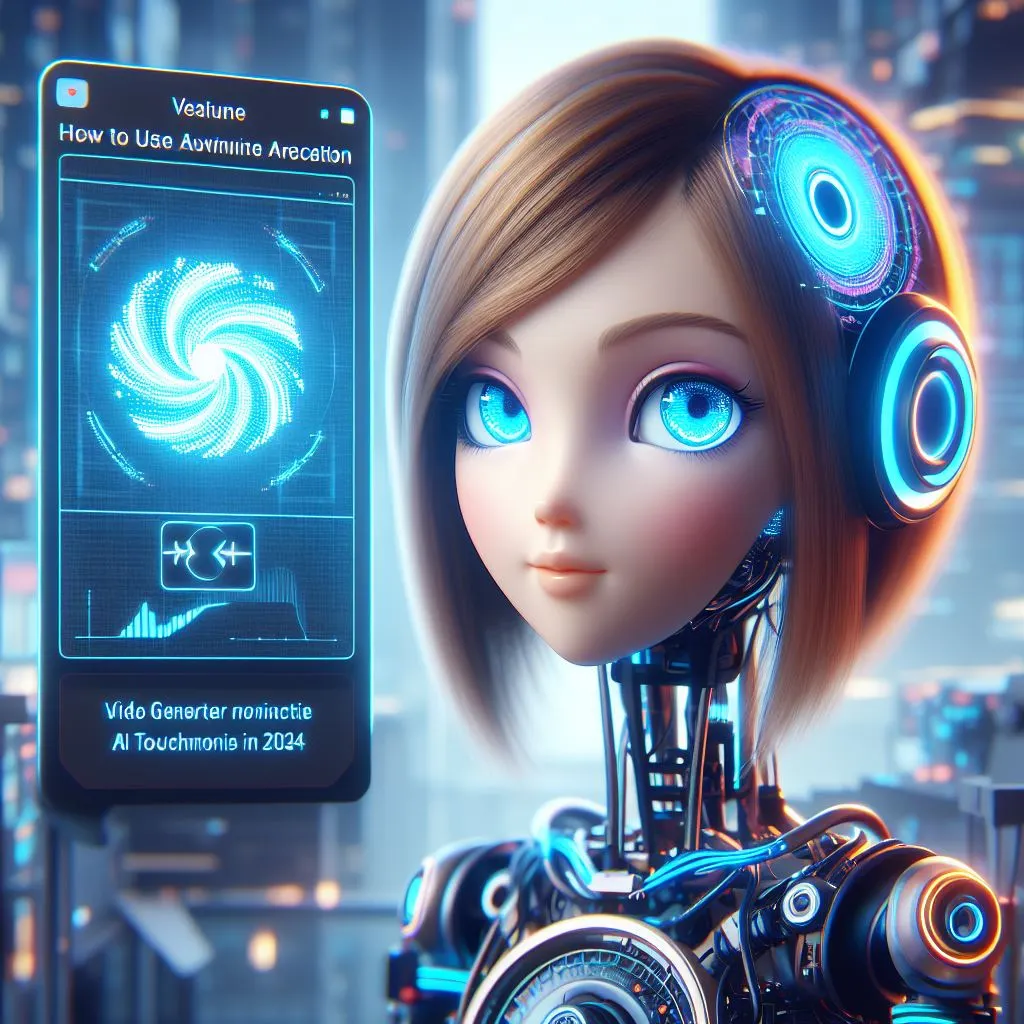The emergence of OpenAI’s Sora AI video generator has sparked significant excitement and anticipation within the tech community. This cutting-edge tool promises to transform the way we create and consume video content, blurring the line between the written word and the moving image.
As we approach the year 2024, let’s dive into the intricacies of Sora and explore how you can harness its powerful capabilities to unleash your creativity and storytelling prowess in the world of AI video.
What is OpenAI Sora?

Sora is an advanced AI model developed by the renowned research company, OpenAI, setting a new standard for AI tools in video generator 2024 technology. This innovative technology is capable of generating high-quality video clips of up to one minute in length, based on concise textual prompts provided by the user.
At its core, OpenAI Sora is a diffusion model that has been trained on a vast array of video data, allowing it to establish strong associations between language and visual representations. By leveraging cutting-edge natural language processing and deep learning techniques, Sora can interpret even the most nuanced prompts and translate them into dynamic, visually compelling scenes, acting as an advanced Sora AI text-to-video generator.
One of the standout features of OpenAI Sora is its ability to maintain a high level of visual quality and narrative coherence throughout the generated video. Unlike previous attempts at text-to-video generation, Sora is able to consistently depict the details and events described in the prompt, ensuring a seamless and immersive viewing experience.
Accessing Sora AI
As of 2024, the accessibility of OpenAI Sora AI has evolved, with OpenAI taking a more open approach to its deployment, making it publicly available.
Current Availability
Initially, OpenAI Sora was made available to a select group of developers, artists, and researchers for testing and providing feedback on the AI text-to-video generator. This “red team” approach allowed OpenAI to assess the model’s capabilities, identify potential risks, and gather valuable insights to refine the technology.
However, in 2024, OpenAI has expanded the availability of Sora, making it accessible to a broader range of users, including the general public. This shift reflects the company’s commitment to democratizing access to this transformative technology and empowering creators, educators, and innovators across various sectors.
OpenAI Sora API and Integration
To facilitate the widespread adoption of Sora, OpenAI has made the technology available through a robust API, allowing developers and users to seamlessly integrate text-to-video generation capabilities into their applications and workflows.
The OpenAI Sora API provides a user-friendly interface, enabling developers to submit text prompts, customize various parameters, and retrieve the generated video content. This level of integration opens up endless possibilities for creative professionals, educators, marketers, and anyone seeking to leverage the power of Sora to enhance their digital experiences through video creation.
How to Use Sora AI

Now that OpenAI Sora is more accessible, let’s explore the steps to harness its capabilities and transform your ideas into captivating video content, engaging with the future of AI video content creation.
Crafting Effective Prompts
The key to unlocking Sora’s full potential lies in your ability to craft compelling text prompts for the AI text-to-video generator, emphasizing the importance of creativity in video content creation. These prompts serve as the foundation for the AI text-to-video generation process, so it’s essential to provide clear, detailed, and imaginative descriptions of the desired scene or narrative.
When composing your prompts, consider including specific details about the setting, characters, actions, and visual elements you want to see in the generated video. The more descriptive and evocative your prompt, the more likely Sora will be able to translate it into a visually captivating and coherent output, underlining the power of Sora AI text-to-video capabilities.
Accessing the Sora Interface
To use Sora, you’ll need to access the dedicated interface provided by OpenAI, enabling you to unlock the full potential of this Sora text-to-video generator. This interface may take the form of a web-based platform, a standalone application, or the integration within a third-party tool or digital workspace.
Regardless of the specific implementation, the Sora interface will typically feature a text input field where you can enter your prompts, as well as various customization options to fine-tune the video generation process. These options may include adjustments to the video duration, aspect ratio, and even the artistic style or visual aesthetic.
Generating and Refining Your Videos
Once you’ve submitted your prompt, OpenAI Sora will commence the video generation process. Depending on the complexity of the prompt and the available computing resources, the generation time may vary, but OpenAI has made significant strides in improving the efficiency and speed of Sora’s output.
As the video is generated, you may have the opportunity to review the initial output and provide feedback or additional prompts to refine the content. This iterative process allows you to collaborate with Sora, guiding the model toward your desired visual narrative and ensuring a seamless, high-quality result, whether you’re a content creator or exploring AI video tools for the first time.
Exporting and Sharing Your Creations
Upon finalizing your OpenAI Sora-generated video, you’ll be able to export the content in a variety of standard video formats, making it easy to share, distribute, or incorporate into your various projects and platforms.
Depending on the intended use case, you may also have the option to leverage Sora’s integration capabilities, allowing you to directly publish or embed the generated videos within your own applications, websites, or social media channels.
Sora’s Transformative Potential

As you delve into the world of OpenAI Sora, it’s important to recognize the transformative potential of this artificial intelligence technology and the impact it can have across various industries and domains.
Creative Industries
For filmmakers, visual artists, and designers, OpenAI Sora opens up new avenues for creativity and exploration through its AI text-to-video capabilities. The ability to generate storyboard visuals, pitch materials, or even short film sequences directly from a script can revolutionize the creative process, empowering professionals to focus more on ideation and less on the technical demands of video production.
Education and Training
In the educational realm, Sora holds the promise of making learning more engaging and visually immersive, showcasing its versatility as a sora AI text to video generator. Educators can leverage Sora to create detailed, animated explanations of complex topics, or generate interactive simulations that bring abstract concepts to life, enhancing the overall learning experience for students.
Advertising and Marketing
The potential of Sora in the advertising and marketing sectors is equally compelling, offering novel approaches to video content creation. Brands can leverage this technology to produce eye-catching video content for their campaigns, drawing from textual descriptions to create visually stunning and impactful marketing materials with AI-generated videos. This can lead to a more efficient and streamlined content creation process, allowing companies to rapidly iterate and test different concepts without the need for extensive video production resources.
Gaming and Virtual Reality
The gaming and virtual reality industries can also benefit from the advancements in text-to-video technology offered by Sora. Developers can use Sora to enhance the storytelling and cinematic aspects of their games and VR experiences, generating dynamic visual sequences that seamlessly integrate with the interactive elements of the digital worlds they create.
Responsible Innovation
As with any transformative technology, it’s crucial to approach the development and deployment of Sora with a deep sense of responsibility and ethical consideration in the realm of artificial intelligence.
OpenAI has taken proactive steps to ensure the safe and responsible integration of Sora, including the initial “red team” approach, ongoing testing and refinement, and the incorporation of content authentication protocols. However, the tech community, policymakers, and society as a whole must remain vigilant in addressing the potential risks and societal implications of this technology, emphasizing the importance of responsible AI tools usage.
Challenges such as the proliferation of deepfakes, the disruption of creative professions, and the need for robust content verification mechanisms will require collaborative efforts and multifaceted solutions. By fostering open dialogue, engaging diverse stakeholders, and prioritizing responsible innovation, we can harness the power of Sora while mitigating its potential harms.
Conclusion
The arrival of OpenAI’s Sora AI video generator in 2024 represents a pivotal moment in the intersection of creativity and technology. This transformative tool empowers users to bring their ideas to life, blending the written word with AI-generated video in unprecedented ways, revolutionizing video content creation.
As you embark on your journey with Sora, embrace the exciting possibilities it offers, while remaining mindful of the ethical considerations and societal implications that come with such advancements in artificial intelligence. By striking a balance between innovation and responsibility, we can unlock new frontiers of storytelling, education, and digital expression, ultimately enriching the human experience in the ever-evolving digital landscape.


